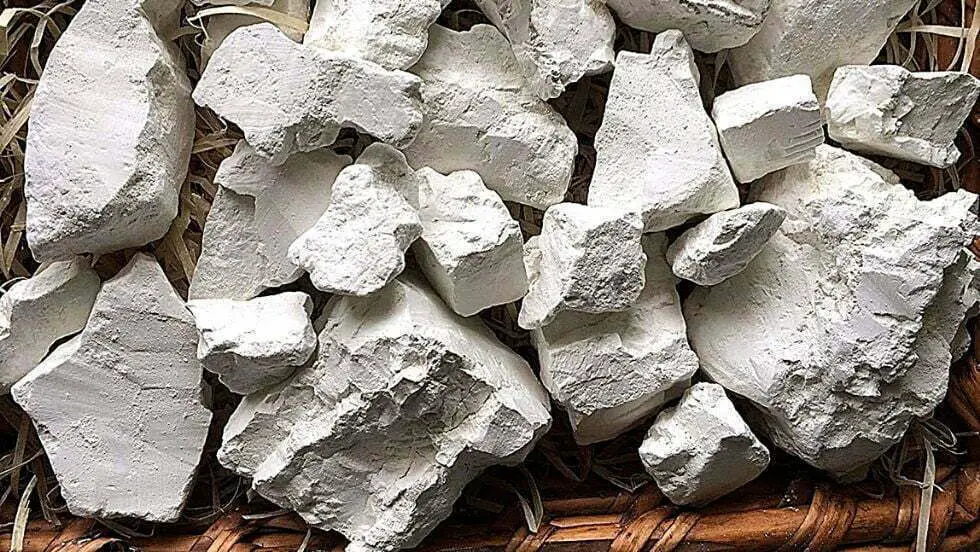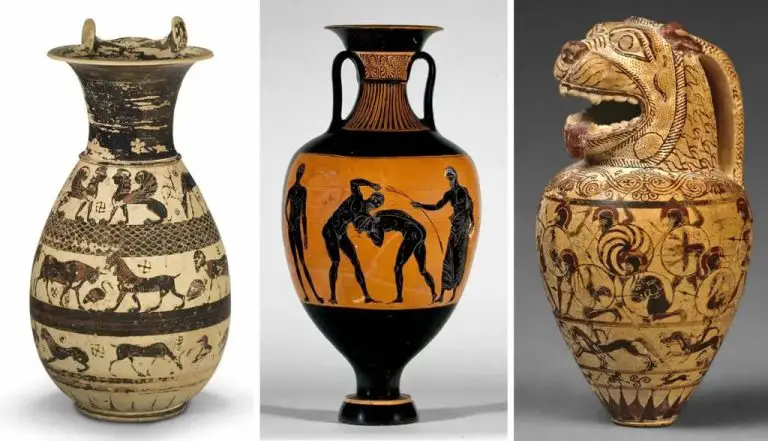What Are The Main Components Of Porcelain?
Porcelain is a ceramic material made by heating natural materials like clay, feldspar, quartz and water to high temperatures. It has a white, smooth appearance and possesses qualities like hardness, durability, and low porosity.
The earliest porcelain was developed in China around the 7th century CE during the Tang Dynasty. Chinese artisans discovered kaolin clay and learned to combine it with feldspar and quartz to create a hard, white ceramic. According to the Metropolitan Museum of Art, porcelain’s qualities of whiteness, hardness, resonance when struck, and impermeability made it a luxurious material and symbol of power. Porcelain production later spread to Europe and around the world.
Today, porcelain has a wide variety of uses including tableware, pottery, electrical insulators, dental implants and crowns, and decorative art objects. It is prized for its whiteness, translucency, and durability.
Clay

The main type of clay used in porcelain is kaolin clay. Kaolin clay, also known as China clay, is a soft white clay that contains kaolinite. It is formed from the weathering of feldspar and other aluminum silicate rocks. Some key properties of kaolin clay that make it ideal for porcelain production include its fine particle size, plasticity when mixed with water, and high fusion point when fired.
According to the Pottery Traditions: Webster Clay mines, Webster, kaolin clay was mined in North Carolina in the late 1800s and early 1900s specifically for use in porcelain insulators and other products. The purity and quality of the kaolin clay gave it superior electrical insulating properties compared to other clays.
Kaolin clay is essential for giving porcelain its white color, plasticity for shaping, and strength after firing. While kaolin is the primary clay, other clays are often added to modify the properties. For example, ball clay may be added to improve workability. The ratio of clays depends on the type of porcelain product being made.
Feldspar
Feldspar is one of the main components of porcelain. Its primary purpose is as a flux, which helps to lower the melting temperature of quartz (Arthur Lin on LinkedIn). There are two main types of feldspar used in porcelain – potassium feldspar and sodium feldspar. Potassium feldspar promotes initial vitrification, while sodium feldspar promotes final vitrification and maturation during firing. Feldspar melts at around 1100–1200°C, helping the quartz in the mixture melt at a lower temperature than its melting point of 1700°C. This allows the materials to fuse together properly during firing. The glassy phase formed by the feldspar’s fluxing action during firing significantly enhances the strength, toughness and durability of the porcelain body.
Quartz
Quartz is an important ingredient added to porcelain for strength. It is the hardest of the common minerals and has a Mohs hardness of 7. The high hardness of quartz allows it to withstand the stresses of being formed and fired without deforming. Quartz makes up around 20-30% of a typical porcelain body. Ground quartz is added as a filler to porcelain to enhance the physical and chemical durability of the material.
There are a few main types of quartz used in porcelain production:
- Silica sand – This common form of quartz has a Mohs hardness of 6-7 and is very abundant. The sand grains provide stiffness and durability to porcelain when fired.
- Fused quartz – Formed by melting pure silica at high temperatures. Fused quartz has a Mohs hardness of 7 and is even more durable than silica sand.
- Flint – A cryptocrystalline form of quartz that fractures conchoidally to form very sharp edges. It has a Mohs hardness of 7. Flint pebbles are crushed and added to provide thin white specks in some types of porcelain.
Overall, the addition of quartz, in its various forms, allows porcelain to be fired to very high temperatures while maintaining its shape and strength. Quartz is a defining ingredient that gives porcelain its characteristic durability and whiteness.
Sources:
https://holst-porzellan.com/en/knowledge/raw-materials/quartz/
https://www.micquartz.com/quartz-in-porcelain/
Water
Water is a crucial component in the production of porcelain. When water is added to clay, it hydrates the clay particles and allows the clay to become plastic and malleable.Water in Ceramics Water penetrates between the clay platelets, causing them to slide over one another easily. This gives the clay plasticity so it can be shaped and formed.The crucial role of water in ceramics The amount of water mixed with the clay is carefully controlled to achieve the desired plasticity and workability for manufacturing porcelain. Too much water will make the clay too soft, while too little water will make it dry and crumbly.
Manufacturing Process
The manufacturing process for porcelain involves several key steps:
Mixing
The raw materials – clay, feldspar, quartz and water are carefully measured and mixed together to form a slurry. The ratios are precisely controlled to achieve the desired properties in the final porcelain product Wikipedia.
Forming/Shaping
There are various techniques used to shape porcelain, including soft plastic forming, stiff plastic forming, casting, and jiggering. In soft plastic forming, the porcelain slurry is shaped by pouring it into molds. In stiff plastic forming, the slurry is partially dried before being shaped using processes like ram pressing. Casting involves pouring the liquid slurry into molds that absorb water. Jiggering uses a rotating wheel to shape porcelain wares How porcelain is made.
Drying
After being formed, the shaped porcelain pieces are left to air dry until they reach a moisture content of less than 1%. This hardens them enough to be handled.
Glazing
A glaze coating is applied to the dried porcelain pieces before firing. The glaze melts during firing to form a glassy surface.
Firing
The glazed porcelain pieces are fired at extremely high temperatures, usually around 1,200–1,400°C to fully harden and vitrify the body. Multiple firings may be done for special finishes.
Firing
Firing is the process of heating the porcelain in a kiln to over 1200°C (2192°F) to fully mature and vitrify the clay material. Different types of porcelain require specific firing temperatures and heating rates for optimal results.
Hard-paste porcelain is fired at higher temperatures of 1300-1400°C (2372-2552°F), while soft-paste porcelain is fired at 1200-1250°C (2192-2282°F). Firing at the proper temperature causes the clay particles to partially melt and fuse together into a non-porous vitrified body.
Kilns used for firing porcelain include electric, gas, wood-burning, and microwave kilns. Kilns allow precise control over heating rates, maximum temperatures, and length of firing. Slow heating followed by a holding time at maximum temperature helps prevent cracking and warping.
Firing causes chemical vitrification and sintering that gives porcelain its translucency, density, and mechanical strength. It also determines the white color of the fired body.
Sources:
https://kilnfrog.com/blogs/frogblog/kiln-temperatures
https://www.kilncontrol.com/blog/kiln-firing-chart/
Glazes
Glazes are an important finishing process for porcelain that serve both functional and aesthetic purposes. At a basic level, glazes provide a glassy coating that makes the porcelain non-porous, so it can hold liquids without leaking. Glazes also allow the porcelain to be safely used for cooking and eating, as the coating prevents bacteria from getting absorbed into the porous clay body. From an aesthetic perspective, glazes add color, shine and visual interest to the porcelain. There are many types of glazes available in different colors and textures.
Glazes are made from a mixture of minerals, including silica, borax, kaolin, quartz, dolomite and colorants. The raw materials are ground into a fine powder and then mixed with water to form a creamy liquid that can be applied to biscuit fired porcelain. Glazes work by melting and fusing to the clay body during the high temperatures of the glost firing process, which can range from 1200°F to over 1400°F. The melted glaze then hardens and forms a glassy coating as it cools.
There are a variety of techniques for applying glazes. These include pouring, dipping, brushing, spraying, sponging, splashing, and dusting the glaze onto the piece. The application method impacts the final look. For example, pouring glaze over the entire piece creates a smooth, even coating. In comparison, sponging or splashing glaze creates mottled effects with areas of thick and thin glazing. Glazes can also be layered in multiple colors and textures. The possibilities are endless for creative effects.
Types of Porcelain
There are several different types of porcelain, distinguished by the materials and manufacturing process used:
Hard-paste porcelain
Hard-paste porcelain is made from kaolin clay and petuntse (a feldspathic rock). It is fired at very high temperatures up to 1400°C, which results in a hard, strong, and highly vitrified ceramic. Some key characteristics of hard-paste porcelain are its high translucency, white color, resonance when struck, and high resistance to thermal shock.1
Soft-paste porcelain
Soft-paste porcelain originated in Europe and uses clay with a lower kaolinite content along with ground glass as one of the ingredients. It is fired at lower temperatures around 1200°C. The lower kaolinite content means it does not become as dense and vitrified as hard-paste porcelain. It has more porosity and is not quite as hard or durable.1
Bone china
Bone china contains bone ash as an ingredient, typically comprising 25-45% of the total body material. The bone ash provides phosphate that aids sintering of the body at lower firing temperatures around 1260°C. Bone china is known for its whiteness, translucency, and high strength. It was first developed in England in the early 1800s.1
Modern Uses
Porcelain continues to have many uses and applications today. One major use is in art and pottery. Porcelain’s smooth, white appearance and ability to be molded makes it an ideal material for sculptures, vases, bowls and other decorative pieces (The 7 Top Uses of Chinese Porcelain – Historic and Modern). Many artists and potters work with porcelain due to its aesthetic qualities and rich history.
Another key use is in sanitaryware like toilets, sinks and bathtubs. Porcelain’s non-porous quality makes it hygienic, easy to clean and resistant to stains. According to What Is Porcelain, and Why Has It Been Cherished For …, durable porcelain ceramic tiles now commonly line floors, walls and building exteriors as well.
Additionally, porcelain has applications in electrical insulators, laboratory equipment, dentistry and more. Its high resistance to thermal shock makes it useful for insulation in things like spark plugs and power line insulators (Common Uses of Porcelain). Porcelain continues to serve various important functions across many industries today.



